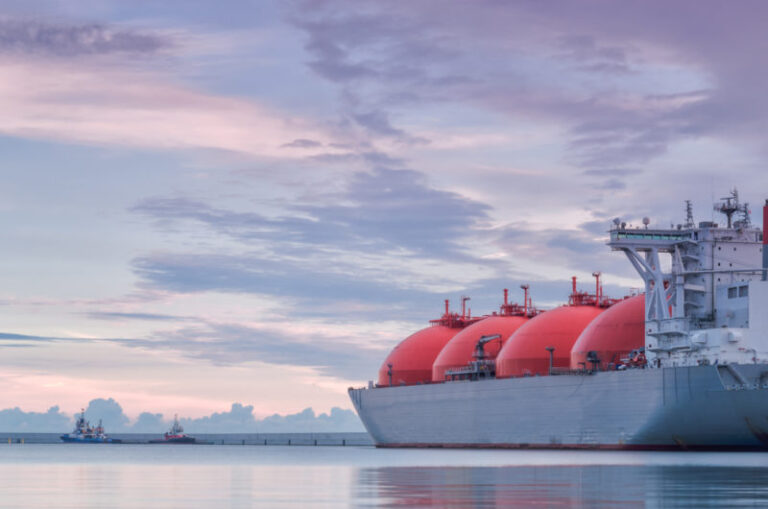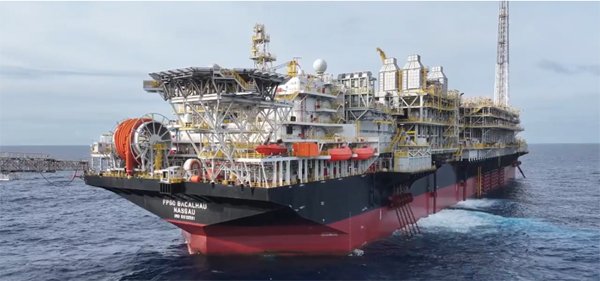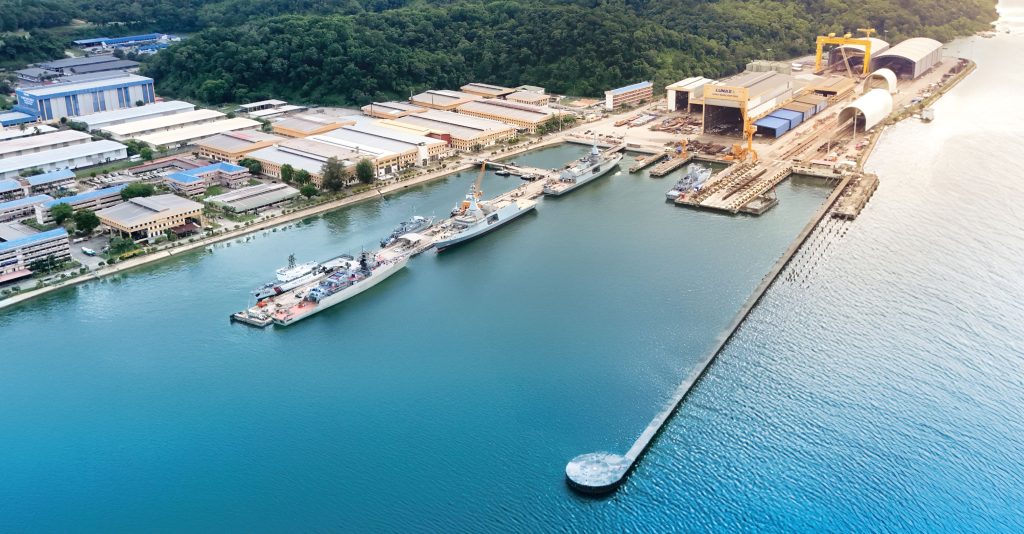


Access deeper industry intelligence
Experience unmatched clarity with a single platform that combines unique data, AI, and human expertise.
Section-by-section dredging enables continuous operations
LUNAS’s section-by-section dredging methodology represented a significant departure from conventional shipyard maintenance practices. Traditionally, dredging beneath a shiplift requires a complete halt to docking operations, as the entire area must be cleared and existing infrastructure may need to be dismantled. This approach often leads to extended downtime, delays in ship movements, and a backlog in maintenance schedules.
By contrast, LUNAS implemented a phased, sectional dredging process that allowed the shipyard to maintain ongoing docking and undocking activities. This strategy allows vessels, including high-draft ships such as Littoral Combat Ships (LCS) and KD JEBAT class ships, to be able to continue to access the shiplift without waiting for high tide or for dredging to be completed across the entire area. The process maintained a minimum operational depth of 10.5 meters, with the ultimate goal of reaching 11.5 meters, thereby accommodating even the most demanding vessel requirements.
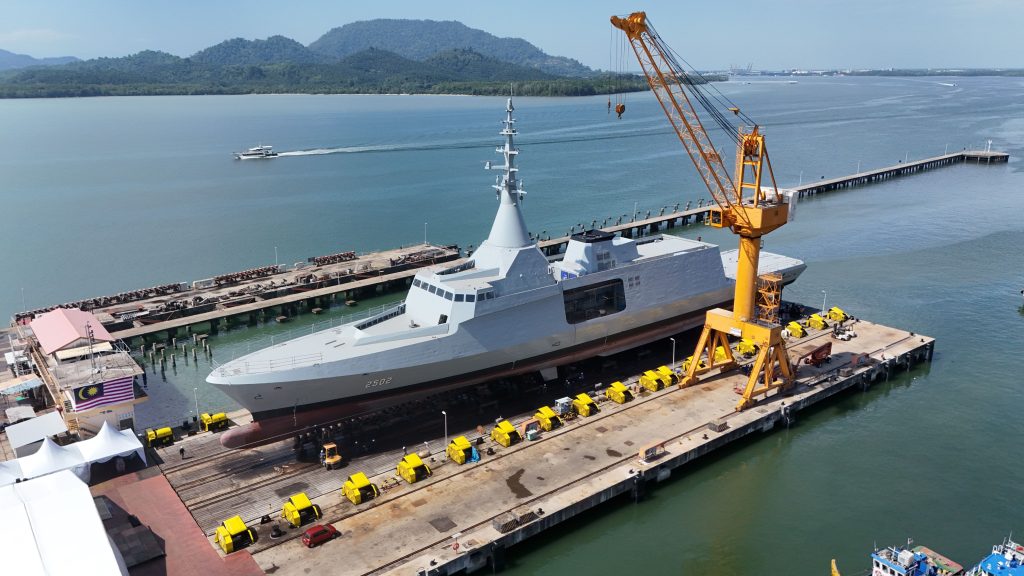
This innovation eliminated the need to dismantle the shiplift platform, which would have otherwise resulted in significant operational disruption and additional costs. Instead, the shipyard was able to maximize its production input, reduce idle time, and accelerate ship turnaround. The ability to schedule ship movements independently of tidal conditions also improved predictability and allowed for more efficient planning of resources and personnel. As a result, the shipyard could avoid the operational bottlenecks and customer delays that previously affected fleet readiness and mission-critical deployments.
Real-time monitoring and adaptive maintenance support sustainability
A core component of the project’s success was the integration of real-time depth monitoring and an adaptive maintenance model. The shipyard is located in an area with high siltation rates, which can quickly reduce water depth and threaten the safe operation of the shiplift. To address this, LUNAS adopted a dynamic dredging process, using continuous monitoring to track sediment accumulation and ensure that critical depth thresholds were always maintained.
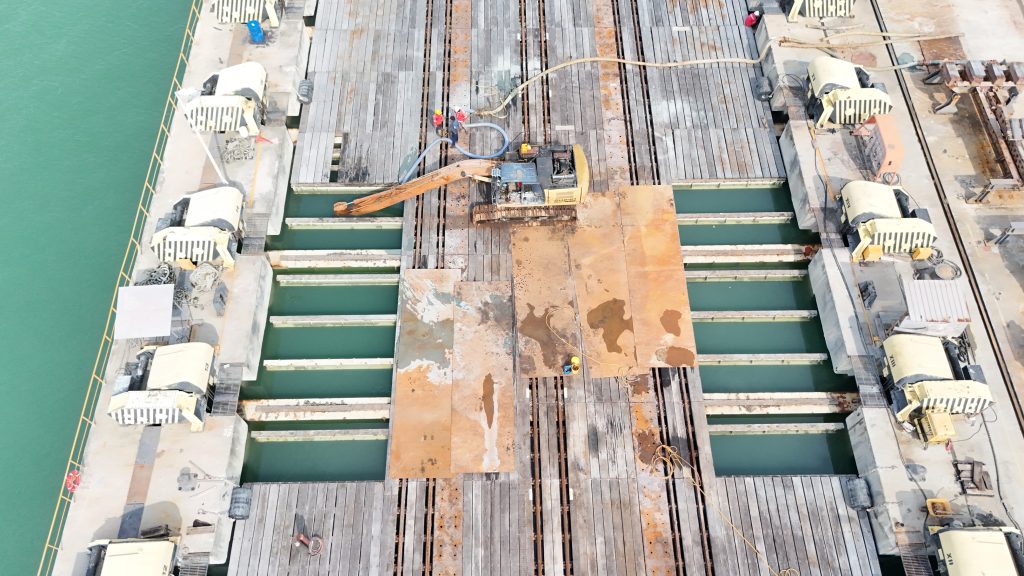
This proactive approach enabled the shipyard to respond quickly to changes in siltation, rather than relying on periodic, large-scale dredging campaigns that could disrupt operations. The recurring maintenance cycles ensured that the shiplift area remained operational, reducing the risk of emergency interventions and the associated costs.
The risk mitigation strategy extended beyond operational continuity. By preventing sediment buildup and silt compression beneath the shiplift, LUNAS protected the structural integrity of vital steel components. Not only this approach reduced the risk of grounding for vessels but also extended the lifespan of expensive infrastructure, minimizing the need for repairs and replacements. The enhanced safety profile of the shipyard further contributed to lower maintenance costs and improved asset management.
Additionally, the adaptive model allowed for more predictable scheduling of ship movements. With real-time data on water depth, the shipyard could plan docking and undocking activities with greater confidence, reducing the likelihood of unplanned disruptions and ensuring that resources were allocated efficiently. This level of operational control is particularly valuable for naval shipyards, where delays can have significant downstream impact on fleet readiness and deployment schedules.
Establishing a new standard of dredging in shipyard
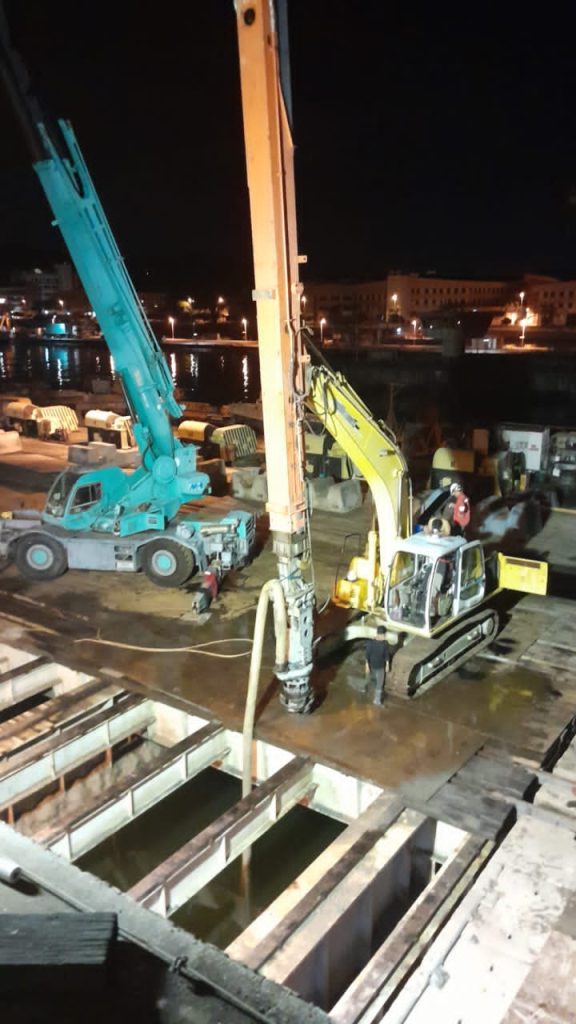
The innovations introduced by LUNAS have implications that extend beyond the immediate operational environment. The section-by-section dredging methodology, combined with real-time monitoring and adaptive maintenance, offers a scalable and adaptable model for other shipyards facing similar challenges with sedimentation and infrastructure constraints.
By demonstrating that continuous operations and maintenance can coexist, even in high siltation environments, LUNAS has introduced a new operational model for the shipbuilding and repair industry. The approach is particularly relevant for facilities handling naval vessels, where the ability to maintain readiness and minimize downtime is critical.
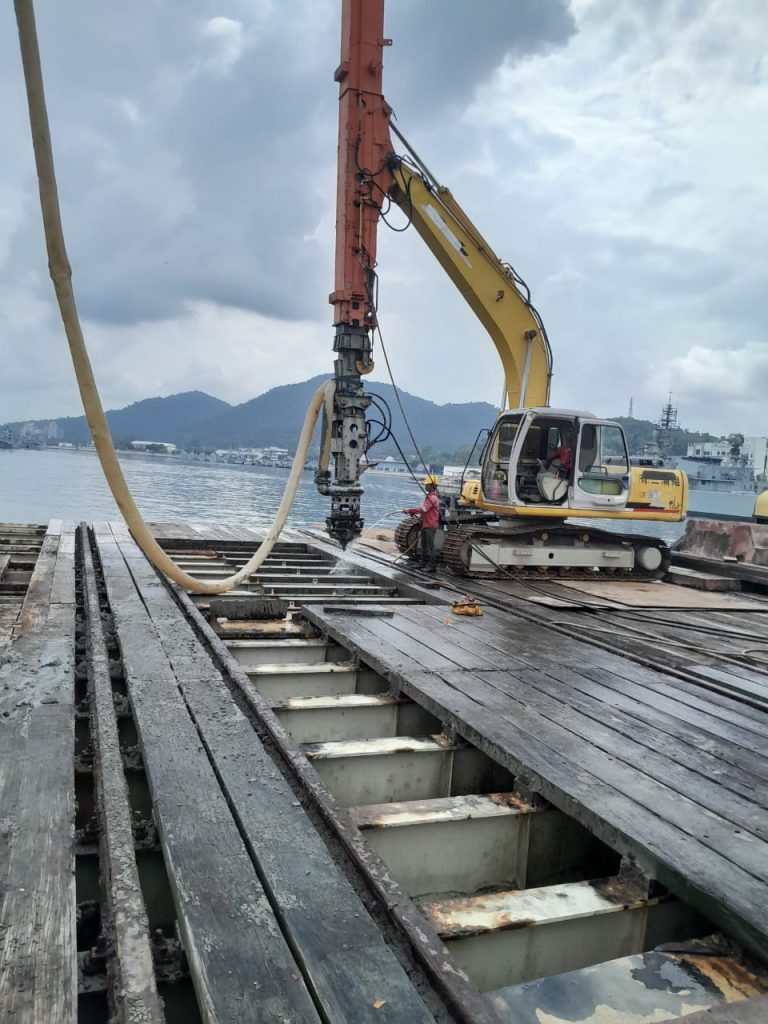
The project also sets a precedent for resource optimization in shipyard operations. By avoiding the need for costly emergency dredging and enabling predictable scheduling, LUNAS has shown how strategic planning can enhance productivity and reduce unplanned disruptions. The preservation of critical infrastructure and the extension of equipment lifespan further contribute to the long-term sustainability of shipyard operations.
Importantly, the methodology developed by LUNAS is designed to be replicable. Other shipyards can adopt similar practices to address their own dredging and maintenance challenges, driving broader industry innovation and resilience. The project’s success demonstrates the value of integrating advanced monitoring, adaptive maintenance, and risk mitigation into core operational processes, setting a new benchmark for dredging excellence in shipyards.

– Ir. Azhar Jumaat, CEO
LUNAS
Company Profile

Lumut Naval Shipyard Sdn. Bhd. (LUNAS) is Malaysia’s premier naval and commercial shipbuilding and ship repair company, strategically located in Lumut, Perak, Malaysia. With over four decades of industry leadership, LUNAS has played a pivotal role in advancing Malaysia’s maritime defense and industrial capabilities.
As the only Malaysian shipyard with capability to design and build full-fledged warships, LUNAS is deeply honoured to serve as a preferred strategic partner of the government in strengthening Malaysia’s maritime defence industry.
The shipyard boasts a proven track record in the construction of various vessels, including frigates, patrol vessels, littoral mission ships, support ships, cruise ships and ferries, in addition to providing complex maintenance, repair, and overhaul (MRO) services for both defense and commercial sectors.
Spanning over 77.28 hectares (land and water), LUNAS features an integrated shipbuilding infrastructure that combines modern facilities with local expertise and a skilled workforce. The company is committed to building a sustainable Malaysian maritime ecosystem through strategic partnerships, workforce development, and ESG-driven operations.
Driven by its transformation strategy and rebranding efforts, LUNAS supports the national agenda of maritime self-reliance while embracing innovation, digitalization, and green shipyard initiatives that position the company as a forward-looking leader in the maritime industry. Supported by LUNAS subsidiary, LUNAS Langkawi Shipyard, which specializes in MRO for yachts, white boats, ferries, tugboats, as well as naval and law enforcement vessels, LUNAS reinforces its role as a national ship repair hub, ensuring broader coverage and stronger contributions to the maritime ecosystem.
Naval Base, 32100 Lumut
Perak, Malaysia
E-mail: corporate.communication@mylunas.com.my
Website: www.mylunas.com.my
Links

